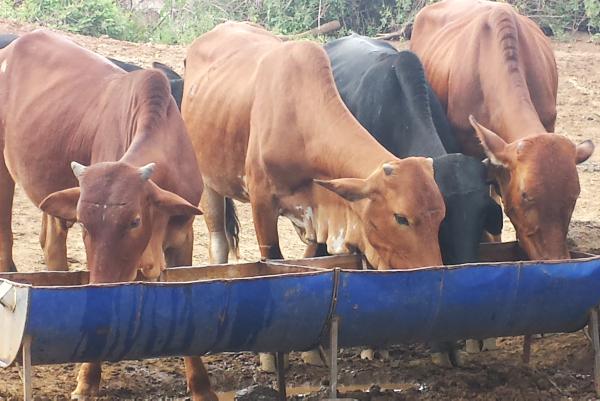This week I made my first phone call home for a farm check-up while in Heathrow airport. I had been able to see the calving cameras on a few occasions when WiFi allowed and received BVD results via text so there was no point concerning myself with stuff out of my control.
I think Dad’s main reason to catch up with me was to confirm the identity of a cow whose calf required a visit from the vet. This is the second year running she has had the vet to her calf, so she will join the cull group.
Last weekend we got an insight into traditional Kenyan pastoral farming with a visit to a Maasai tribal village. They run cattle (a sign of wealth), sheep, goats and donkeys. I was lucky enough to travel in the same jeep as their chief and when he discovered I was a cattle man also, the conversation flowed.
The Maasai tribe which we visited run 500 cattle between them and lead a semi-nomadic lifestyle following forage where they can find it. Stock are principally Zebu cattle with the majority of the work involving stock protection from wildlife and giving stock water. To make it easier to locate stock, some cows wear bells. While watching them bring stock in for water, I closed my eyes and listened to the sounds of shouting, whistling and the occasional stick work. It was as if I was in any mart in Ireland.
The place looked like a stereotypical tribal village with huts surrounding a large boma made out of thorn bushes in the centre. Smart phones were present in abundance and I was able to get a run down on the English premiership title race as well as a full run down on the Barcelona soccer team.
Two of us missed out on tours of the huts as tribesmen gathered around us to see pictures and videos of our respective cattle and sheep enterprises. The general comment I kept receiving was that the cattle were impressive but too big. I know for a fact my herd would struggle in the environment the Maasai graze in. We were questioned about our systems of pasture management and how we could work stock with so few people with Hannah Marriot's sheepdog video proving very popular.
What struck me most was the amount of similarities they had with a significant amount of Irish livestock farmers, relatively good uptake of mobile phone technology, a stubborn resistance to change of farm practice and hundreds of years of an emotional attachment to a way of life rather than a business.






 This is a subscriber-only article
This is a subscriber-only article













SHARING OPTIONS: